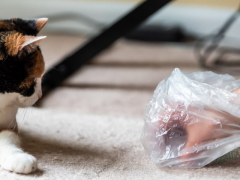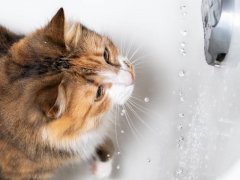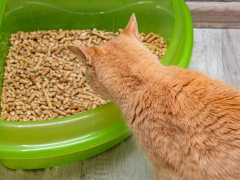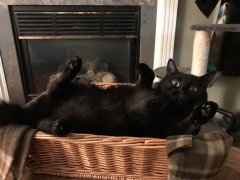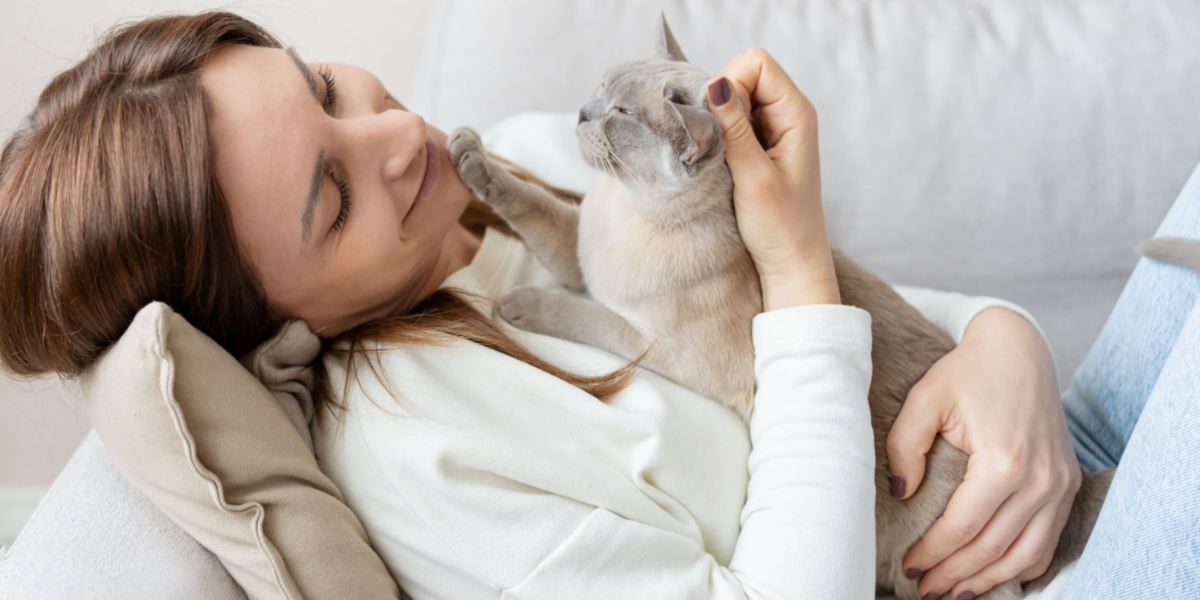
There’s nothing more gratifying to a cat owner than a fluffy furball sitting or snuggling up on their chest purring loudly, some cats may even start kneading a caregiver’s torso with contentment.
Sitting or sleeping on top of your upper body is a common phenomenon in both the canine and feline world, mostly it conveys intimacy, love along with a powerful bond between you and your pet, though if you suffer from respiratory illnesses, sleep deficiencies or pet allergies it may be challenging to stay still for extended period of times.
Let’s explore what makes the human’s chest so attractive to your lovable feline.
Reasons Why A Cat Sits On Your Chest
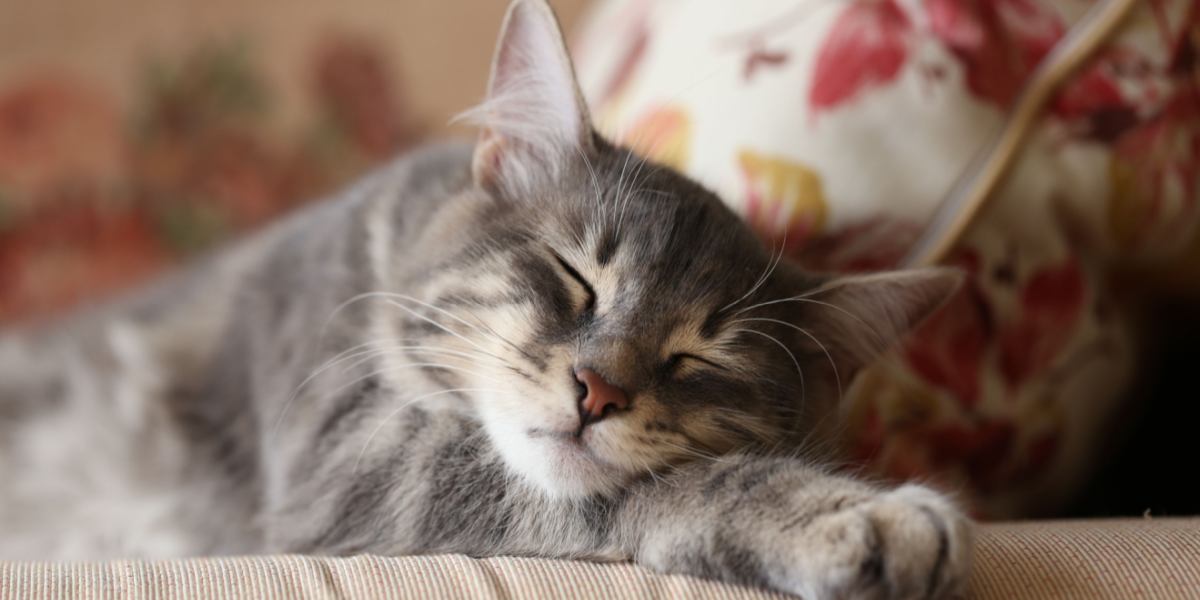
There are lots of reasons why a cat sits on a person’s chest, although we don’t’ have sufficient scientific evidence to answer this question, let’s examine few theories.
#1 Bonding Opportunity
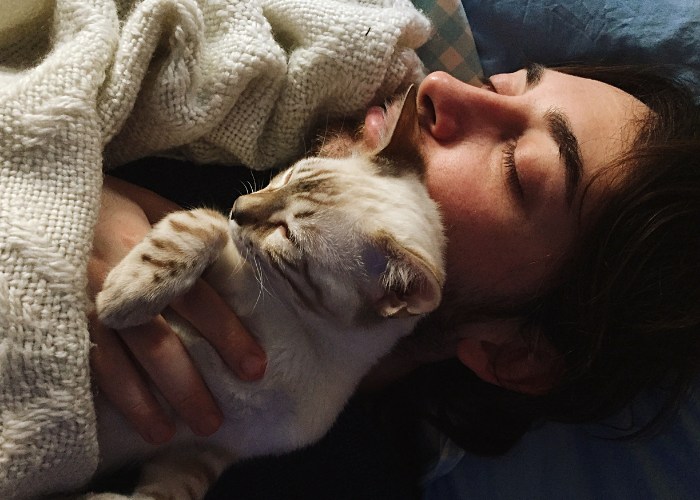
Based on what we know about mammals and sleep, most experts agree that like humans, cats dream during REM sleep.
According to a research published in the Current Biology Journal some felines form strong emotional attachments with their caregivers like those that dogs and baby’s form. Sitting or resting on an owner’s chest provides them the opportunity to bond even closer with their carer through touch.
#2 They’re Reassured By Your Heartbeat
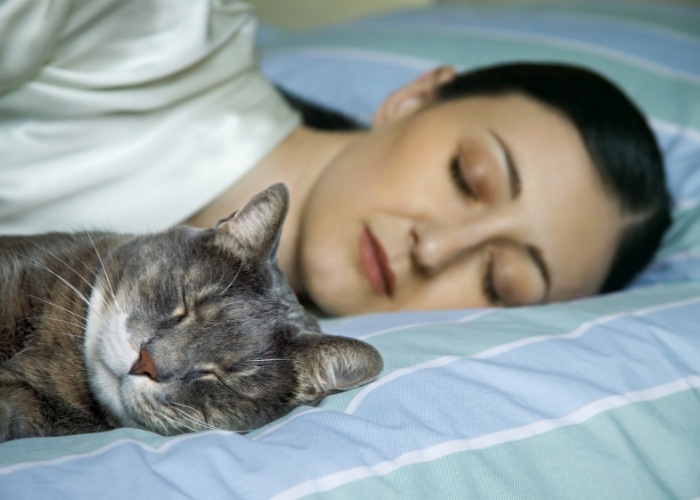
Holding your cat near your chest is reassuring to your feline friend. Not only they feel protected, but they will hear the sound of your heartbeat which offers the feeling of closeness similarly to the queen’s heart rate which transports them back to kittenhood.
#3 They’re Searching For Comfort And Warmth
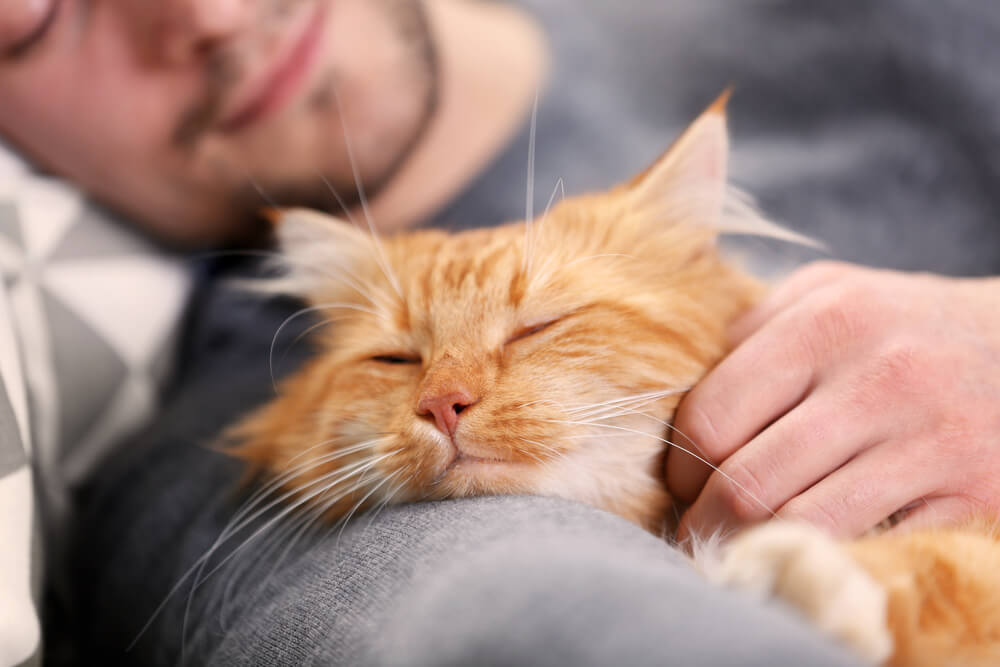
A cat’s level of comfort within its surrounding is linked to its physical health plus emotional wellbeing. Many cats seek cardboard boxes plus beds for solace and warmth, while others prefer a comfortable alternative such as our chest.
Our torso is a wonderful option since it provides natural body heat better than any electrical blanket or bed, keeping muscles, tendons and joints supple ready for hunting following a lengthy snooze.
Also Read: The 12 Best Cat Beds
#4 Maybe There’s A Hormonal Explanation
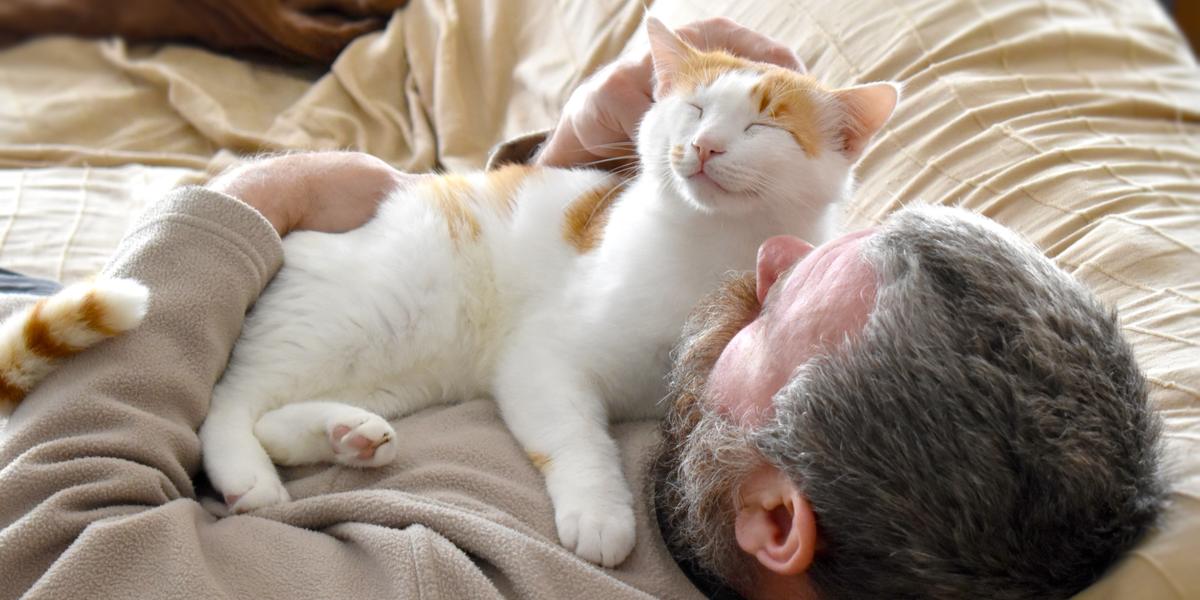
Perhaps, there’s a hormonal reason cats sit on our upper body. According to recent study published in the Frontiers in Veterinary Science, oxytocin functions not just to reduce stress but also promotes positive interactions when cats are in close contact with their owner; therefore it’s probable that resting on the chest while the caregiver strokes the cat increases the ‘feel good’ hormone which promotes a similar feeling experienced while the queen nursed her offspring.
#5 Your Feline Craves Security
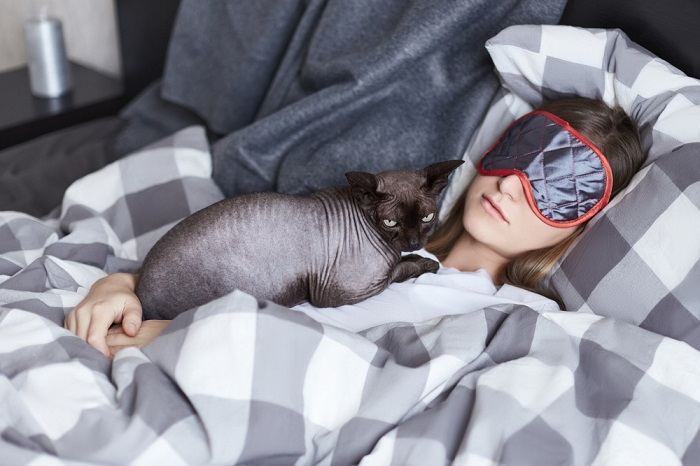
Resting on the chest while the caregiver strokes the cat increases the ‘feel good’ hormone for cats
Another important reason cats enjoy sitting or napping on your chest is to feel secure. A carer’s chest provides an elevated spot away from household pets, intimidating moggies or uninvited predators.
Likewise a cat that’s elderly or unwell may seek an owner’s safety and protection within its core territory by sitting on a caregiver’s chest to minimise vulnerability.
Also Read: How to Safely Trim Cat Nails – A Step by Step Guide
#6 To Alleviate A Sense Of Distress
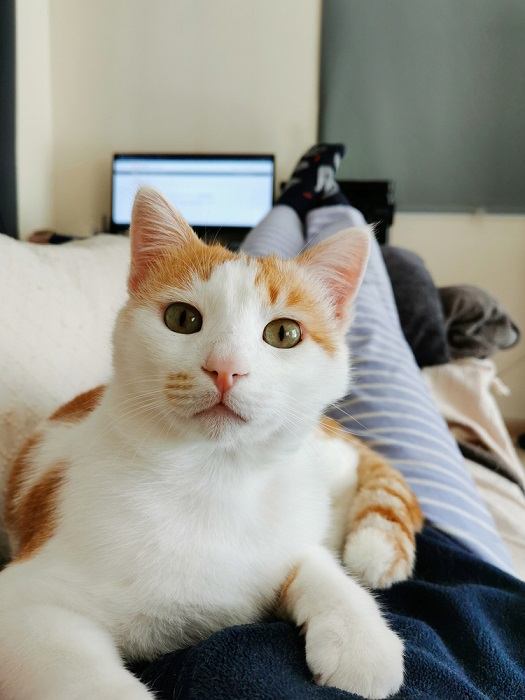
Cats like people experience both positive and negative feelings. Although a cat can’t express their feeling verbally, they communicate through body language, behavioural changes and vocalization. Your cat may convey distress or illness by climbing or sitting on your chest.
Additionally, felines who exhibit secure attachments to their owners may become highly distressed when separated from their owners for lengthy periods then may follow their owners round the house and sit on their chest upon their return to alleviate a sense of distress.
#7 They Want You All To Themselves
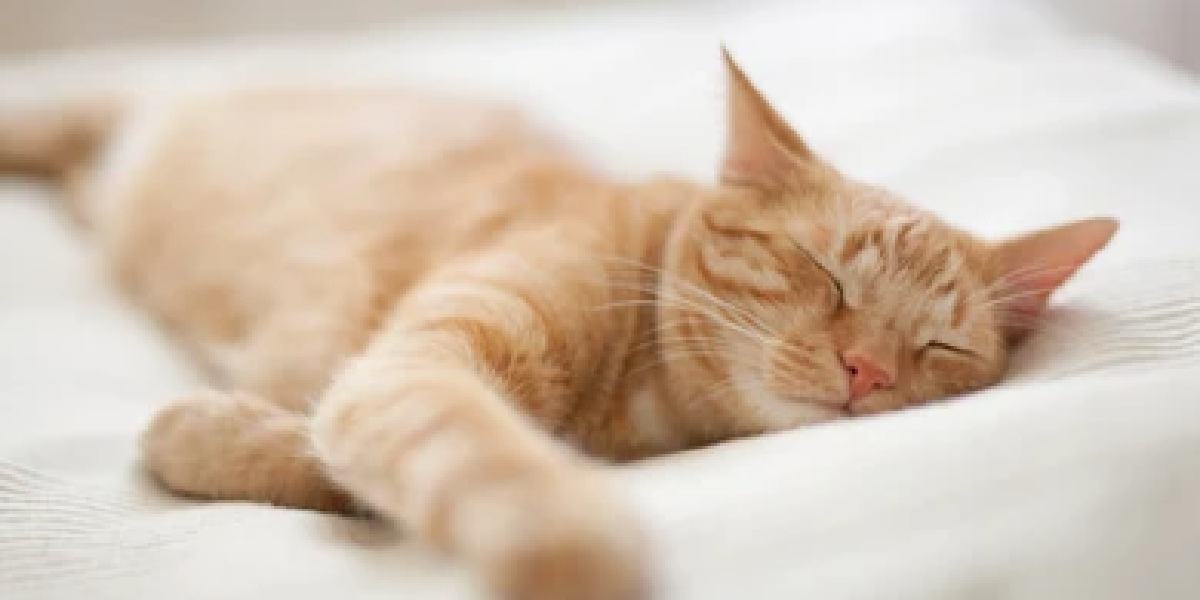
It’s well known – cats don’t like to share! Imagine your cat has to share the house and all their resources with two or more other pets hardly getting sufficient attention, by jumping on your knees and/or sitting on your chest, they’ll ensure you’ll provide them undivided care and devotion.
Although it’s not as common as within the dog world, certain cats in multi-cat households that had a traumatic start to life may become overprotective of toys, food, territory and their carer, this is referred to a ‘Resource Guarding’. They may spend plenty of time resting on their owner’s chest growling or swatting when other pets invade their area.
Also Read: 7 Common Cat Vocalizations And What They Mean
#8 Scent Marking
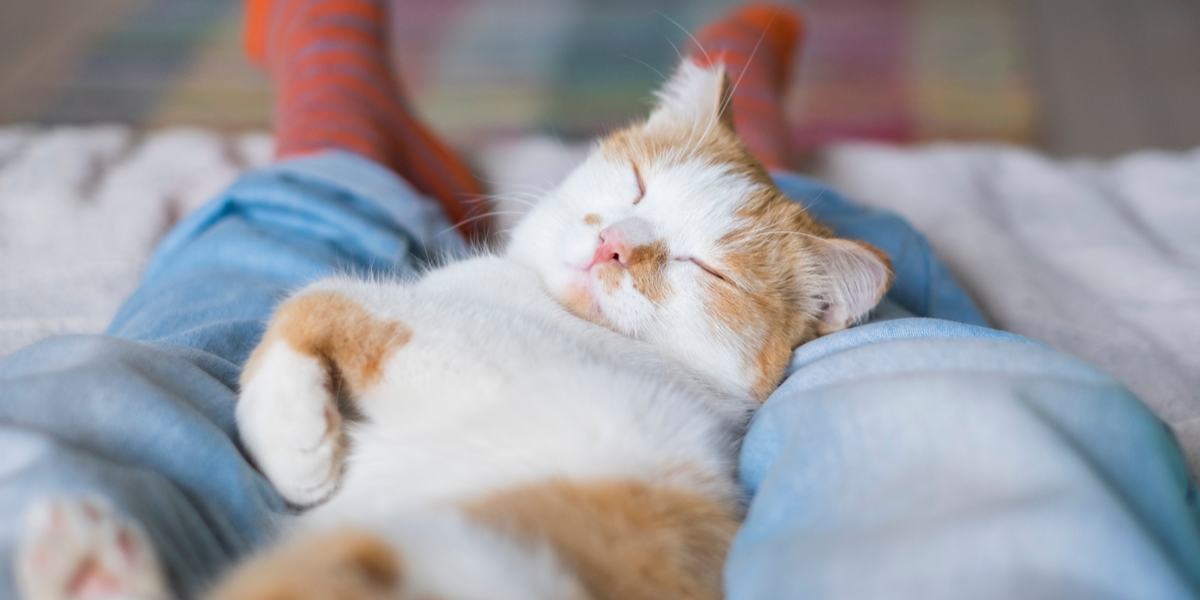
Cats deposit chemical messages to guard their territory, display recognition of social cohesion and convey their feeling. When a cat is dedicated to you and loves you unconditionally, they will sit on your chest, head-butt your forehead, intertwine their tail with your arm along with intermingle their scent with yours to mark you as theirs.
#9 They’re Trying To Get Your Attention

Some cats have no concept of personal space, they will do anything to get your attention, particularly if you’re working long hours or look after many children or pets.
Honestly, who can ignore a cat who sits on our chest early hours of the morning, perhaps your cat is hungry, wants to play or go outdoors, after all cats are crepuscular hunters mostly active before sunrise and at sunset.
Don’t make the mistake of getting up or feeding your cat early morning since you’ll inadvertently reinforce the attention seeking behaviour where your cat will resort to sitting on your chest each morning till you meet their ‘demands’
Also Read: 11 Tips To Train Your Cat To Sleep All Night
#10 They Like Your Clothes Texture And Smell
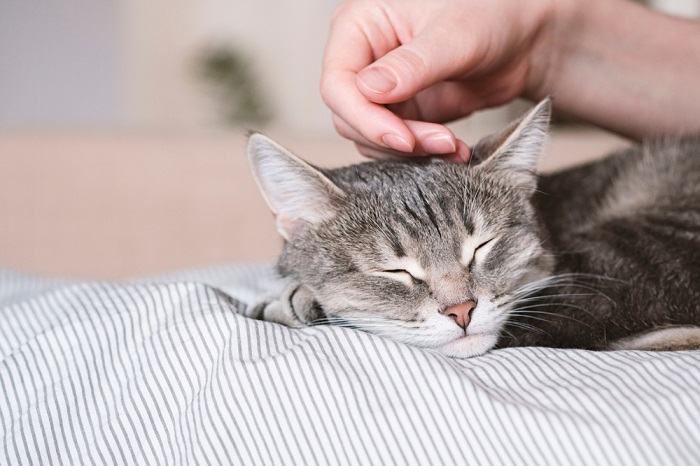
Our feline companions enjoy diverse kinds of textures, nevertheless each cat has an individual choice of fabric they like under their paws. After all felines are comfort seekers, sitting on our chest not only offers a reassuring tactile experience but also carries our familiar scent.
If your cat starts kneading your chest within a brief time, it means they relate the secure nature of your relationship with that of its mum when it was a kitten which is heart-warming.
#11 Your Cat Is Your “Therapist”
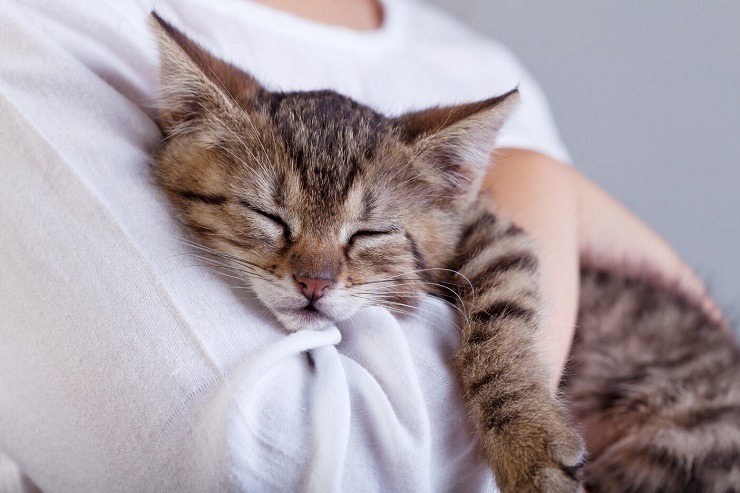
It’s unnatural for cats to be picked up – friendly communication between cats tends to involve head and body rubbing and bunting.
While this might sound surprising, in recent years there’s been growing scientific interest in the benefits of pets to people. Although most of the studies have focused on a mixture of dog and cat owners, there are several promising health studies that have investigated only felines which found the subsequent health benefits when interacting with people:
- Lower heart rate
- Lower blood pressure
- Stress reduction and quicker recovery during stress tests
In addition, a recent UK based study explored the effects cats have on physiological health a little further. The results revealed that the presence of stroking a cat on your lap or chest can reduce your heart rate including blood pressure hence it suggested that interacting with your cat while it’s on your rib cage can result in positive health benefits for folks that enjoy cats.
Should You Reduce The Cat-to-Chest Time
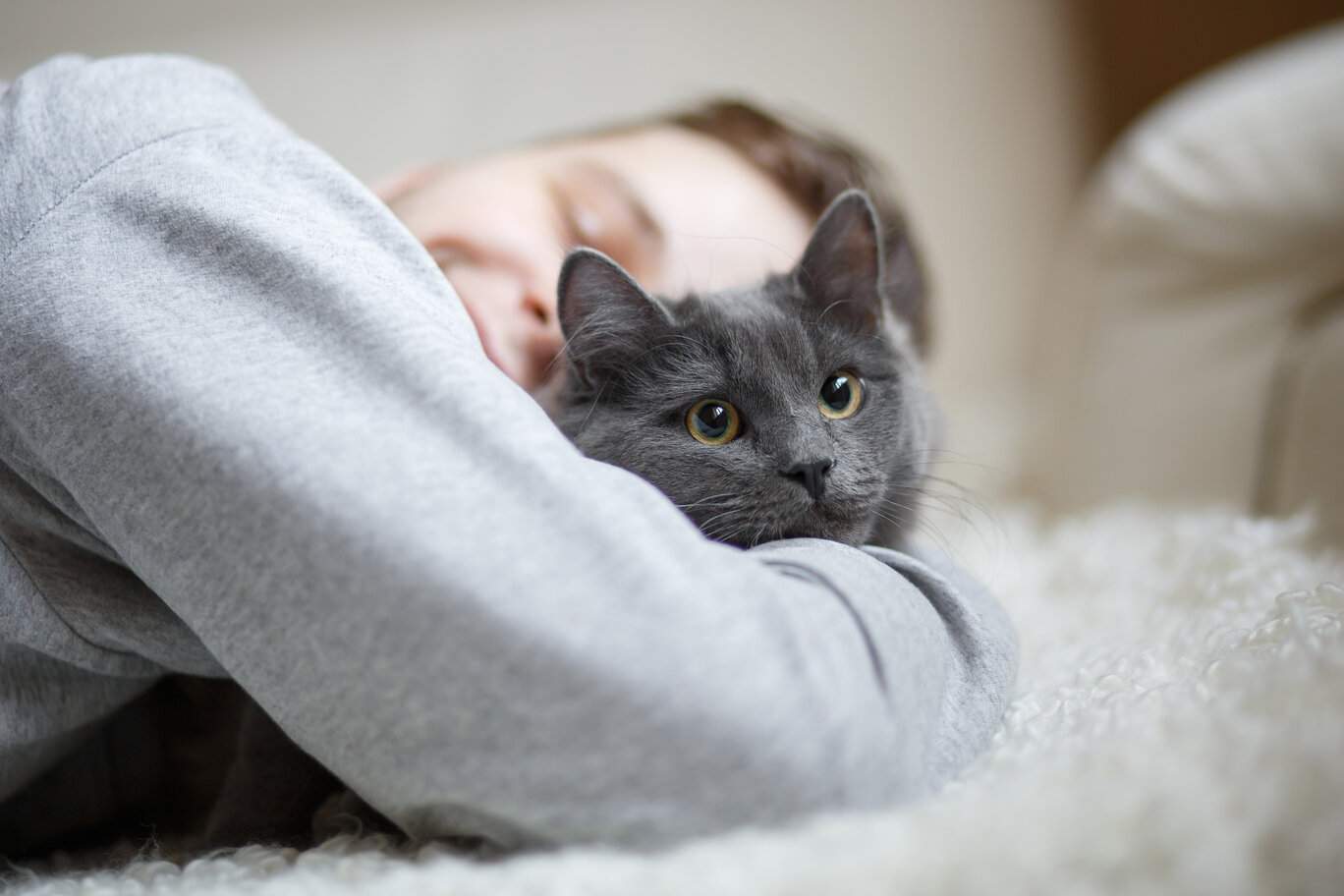
As we’ve learned there are many health benefits to a resting cat on our upper body, nevertheless there’ll be times when you should reduce the cat-to-chest time, particularly if you suffer from the following conditions:
- Pet allergies
- Breathing difficulties
- Sleeping problems
Moreover, long claws can feel like pricking needles during kneading bouts and there’s nothing hygienic about an outside cat covered in dirt sitting on your chest wanting attention.
To minimise your cat from sitting or napping on your chest invest in a snuggly cuddler lined with catnip and/or a treat or place a scented T-shirt soaked with your smell nearby. Alternatively experiment with a heating pad covered in fur-like fleece and squirt a calming spray onto their favourite spot.
Lastly if your cat is impairing your night sleep, engage in interactive playtime before bed plus establish a dedicated sanctuary room for your cat to sleep in.
Final Thoughts
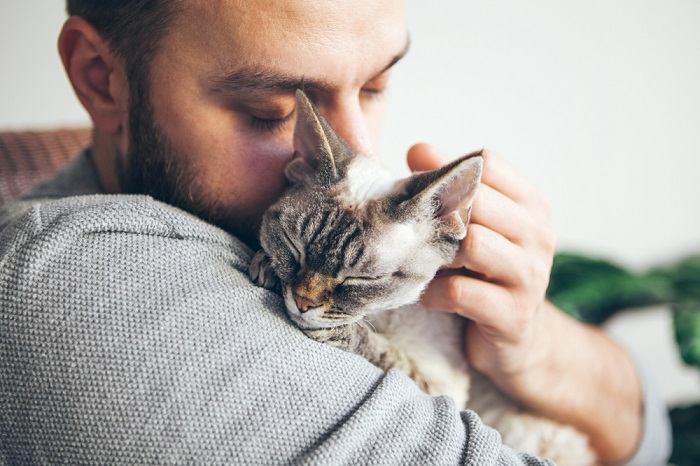
There’s nothing more enjoyable for an owner than a lovable cat sitting on their chest purring with contentment while you’re cuddling them, after all your cat’s love and devotion is precious but if you find it a little uncomfortable sometimes, redirect them onto a warm comfortable bed or your smelly T-shirt instead.
Also Read: Why Does My Cat Lay And Sleep Between My Legs?
-
Atkinson, T. (2018). Practical Feline Behaviour. Wallingford, Oxfordshire, UK: CABI. Retrieved July 28, 2022
-
Care, I. C. (2020, September 01). Advanced Feline Behaviour for Vet Professionals MODULE 1 WHAT AM I AND WHERE DID I COME FROM. UK. Retrieved July 27, 2022
-
Health, N. I. (2018, February). The Power of Pets Health Benefits of Human-Animal Interactions. (N. I. Health, Compiler) Bethesda, Maryland, USA. Retrieved July 26, 2022, from https://newsinhealth.nih.gov/2018/02/power-pets
-
Katherine A. Kruger, S. M. (n.d.). WALTHAM® Pocket Book of Human-Animal Interactions. Retrieved July 25, 2022, from http://dx.doi.org/10.13140/2.1.1417.9528
-
Kerstin Uvnäs-Moberg, L. H. (2015). Self-soothing behaviors with particular reference to oxytocin release induced by non-noxious sensory stimulation. Frontiers in Psychology, 5, 1529. Retrieved July 28, 2022, from https://www.ncbi.nlm.nih.gov/pmc/articles/PMC4290532/
-
Sarah L H Ellis, I. R. (2013). AAFP and ISFM Feline Environmental Needs Guidelines. Journal of Feline Medicine and Surgery, 219-230. Retrieved July 24, 2022
